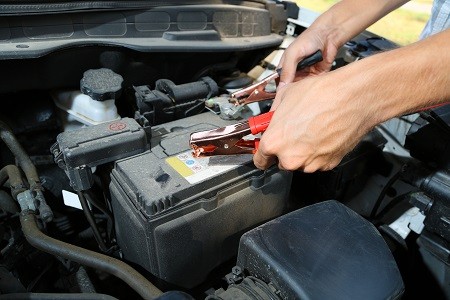Picture this: you’re ready to start your day, keys in hand, maybe a coffee in the other. You slide into your car, turn the key in the ignition, and… silence. Or maybe just a click, click, click. That dreaded moment when your car won’t start can throw a wrench into your entire schedule. Whether you’re facing a dead battery or something more complex, understanding why your car is refusing to start is the first step to getting back on the road.
Decoding the Silence: Why Your Car Refuses to Start
A car that won’t start is a common automotive headache, and thankfully, many of the underlying issues are relatively straightforward to diagnose and even fix yourself. Before you call for a tow truck, taking a systematic approach to car won’t start diagnosis can save you time and money. This guide, brought to you by the auto repair experts at xentrydiagnosis.store, will walk you through five quick diagnostic tests you can perform to pinpoint the problem. Keep your vehicle owner’s manual nearby, as it can be an invaluable resource for locating specific parts in your car. If you don’t have one handy, online resources and automotive forums can also be helpful in identifying component locations.
Test #1: Battery Check – The Prime Suspect
More often than not, a car that won’t start points to a battery issue. The good news is that this is usually the easiest problem to address. Batteries can fail for various reasons, from simply reaching the end of their lifespan to being drained by leaving lights or accessories on. Modern cars are equipped with numerous electrical systems that draw power even when the engine is off. Leaving headlights, interior lights, the radio, or even forgetting to fully close a door can drain your battery, especially if it’s older or already weak.
Start by ensuring all lights and accessories are switched off. Also, check if your car alarm system is properly disarmed, as a malfunctioning alarm can sometimes interfere with starting. Visually inspect your battery terminals for corrosion, which appears as a white, powdery buildup. Corrosion can impede the flow of electricity. Make sure the battery cables are securely fastened to the terminals; loose connections are a common culprit.
If you have a multimeter, you can check your battery voltage. A healthy car battery should read around 12.6 volts when the engine is off. A reading below 12 volts indicates a discharged or weak battery. If you suspect a dead battery, jump-starting your car is a quick way to confirm. If the car starts with a jump and then dies soon after or won’t restart on its own, a new battery or alternator issue is likely. Consider investing in a portable car battery jump starter for such situations; it can save you from relying on others for a jump start.
Test #2: Alternator and Starter Examination – Power Delivery System
If your battery seems fine, or jump-starting didn’t solve the problem, the next step in your car won’t start diagnosis is to consider the alternator and starter. These components are crucial for getting your engine running. The starter is a powerful electric motor that cranks the engine to initiate combustion. The alternator, on the other hand, is responsible for charging the battery while the engine is running and providing power to the car’s electrical systems.
When you turn the ignition key, you should hear a distinct “cranking” sound from the starter as it attempts to turn the engine over. If you hear clicking sounds but no cranking, or very slow, labored cranking, it could indicate a weak starter or insufficient power from the battery (revisit Test #1). If there’s no sound at all, and you’ve ruled out the battery, the starter itself might be faulty.
To check the alternator belt, open your car’s hood. Locate the serpentine belt, which drives the alternator and other accessories. Ensure the belt is in good condition, not cracked or frayed, and has proper tension. A loose or broken belt can prevent the alternator from charging the battery. Also, visually inspect the wiring connections to both the alternator and starter for any damage or looseness.
A failing alternator might not immediately prevent your car from starting if the battery is still charged. However, it will eventually lead to a dead battery as it fails to replenish the battery’s charge while driving. If you suspect an alternator issue, it’s best to seek professional diagnosis at a certified auto repair shop. Testing the alternator often requires specialized equipment.
Test #3: Spark Plug Inspection – Ignition System Essentials
Spark plugs are vital components of your car’s ignition system. They generate the spark needed to ignite the air-fuel mixture in the engine cylinders, initiating combustion and starting the engine. If your car cranks but doesn’t start, or if it starts with difficulty and runs roughly, spark plugs could be the problem in your car won’t start diagnosis.
Common symptoms of spark plug issues include: engine misfires (a jerky or sputtering feeling), rough idling, poor acceleration, and reduced fuel economy. While less directly related to a “no start” condition, these symptoms can indicate spark plug problems that might eventually lead to starting failures.
Locating spark plugs usually involves finding the ignition wires or coil packs connected to the engine’s cylinder heads. Consult your owner’s manual for the exact location. While visually inspecting spark plugs for wear, damage, or fouling requires removing them (which might be beyond basic DIY for some), you can often assess their condition by examining the spark plug wires for damage or loose connections. If you are comfortable removing a spark plug, check for a cracked porcelain insulator, burnt or excessively worn electrodes, or carbon fouling.
Replacing spark plugs is a relatively straightforward maintenance task on many vehicles and can often resolve starting and running issues related to the ignition system. New spark plugs are readily available at auto parts stores.
Test #4: Fuel Injection System Assessment – Fuel Delivery Pathway
The fuel injection system is responsible for delivering the correct amount of fuel to the engine at the right time. Problems within this system can certainly lead to a car won’t start situation. In your car won’t start diagnosis, consider fuel delivery issues if the engine cranks normally but doesn’t seem to be getting fuel.
Possible fuel injection problems include a clogged fuel filter, a failing fuel pump, or issues with fuel injectors themselves. A clogged fuel filter restricts fuel flow to the engine. A failing fuel pump may not deliver sufficient fuel pressure to the injectors.
To check for fuel delivery, you can listen for the fuel pump priming when you turn the ignition key to the “ON” position (before starting). You should hear a brief whirring or buzzing sound coming from the fuel tank area (usually under the rear seat or near the fuel tank). If you don’t hear this sound, the fuel pump might be faulty or not receiving power.
Checking fuel pressure requires specialized tools and safety precautions and is generally best left to professionals. However, you can check the fuel pump fuse and relay in your car’s fuse box (refer to your owner’s manual for location). A blown fuel pump fuse can prevent the pump from operating.
Replacing a fuel filter is a routine maintenance item and can sometimes resolve fuel delivery issues. Fuel filters are typically located in the fuel line, often under the car or in the engine compartment. Refer to your manual for the exact location and replacement procedure.
Test #5: Fuel Level Verification – The Simplest Overlook
It might sound obvious, but running out of fuel is a surprisingly common reason for a car not starting! In your car won’t start diagnosis, don’t overlook the simplest explanation: an empty fuel tank. Fuel gauges can sometimes be inaccurate, or you might simply misjudge your fuel level.
Ensure your fuel gauge is reading at least a quarter of a tank. If you suspect a faulty fuel gauge, or if you genuinely are unsure of your fuel level, adding a gallon or two of gasoline can quickly rule out fuel starvation as the cause.
Beyond just fuel level, other fuel-related issues can prevent starting. In cold climates, fuel lines can freeze if moisture is present in the fuel. Contaminated fuel or debris in the fuel tank can also clog the fuel filter or damage the fuel pump.
Still No Start? Time for Professional Car Won’t Start Diagnosis
If you’ve diligently gone through these five diagnostic tests and your car still refuses to start, it’s a clear signal that the problem lies deeper. At this point, it’s time to seek professional help from certified automotive technicians. Complex issues like engine management system failures, immobilizer problems, or internal engine mechanical problems require specialized diagnostic equipment and expertise.
A “check engine light” illuminated on your dashboard often indicates that the car’s computer has detected a problem. While it doesn’t always pinpoint a “no start” issue, it’s a strong indicator that a professional scan and diagnosis are needed. Attempting to diagnose and repair complex automotive problems without the right tools and knowledge can lead to further damage and increased repair costs.
Need Expert Car Won’t Start Diagnosis and Repair?
If you’re in the Vancouver area and struggling with a car that won’t start, the team at xentrydiagnosis.store is here to assist. Our experienced and ASE-certified technicians can perform a comprehensive car won’t start diagnosis to accurately identify the root cause of the problem. We handle all makes and models and are committed to providing reliable and efficient auto repair services to get you back on the road quickly and safely. Don’t let a car that won’t start derail your day – contact us today for expert diagnosis and repair!

